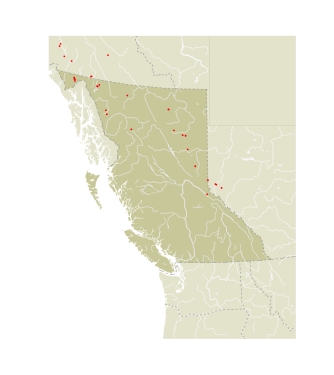The name Boloria is derived from the Greek bolos (fishing net) and refers to the reticulate or checkerboard wing pattern (Emmet 1991). The common name "angled lesser fritillaries" refers to their small size and to the angled margin of the hindwing. The common name is used here for the first time.
Palearctic workers and their popular books restrict the use of the genus Boloria to that of Warren (1944) and use a second genus, Clossiana, for most species in this group. We accept that approach. As used by Palearctic authors, the genus Boloria is defined by the shape of the valves. The dorsal or superior dorsal process has two distinct and heavily chitinized projections (Shirôzu and Yamamoto 1953). The genus Clossiana has only one (Warren 1944). Grey (1989) further points out that the uncus of Boloria is heavily spiculate or covered with short, thick hairs. In addition, the hindwing margin has a characteristic sharp angle at the M3 vein. Both Boloria and Clossiana have a bifid uncus, a tribal character. As defined by Palearctic workers, there are two to four species, only one of which occurs in North America.
|
|
